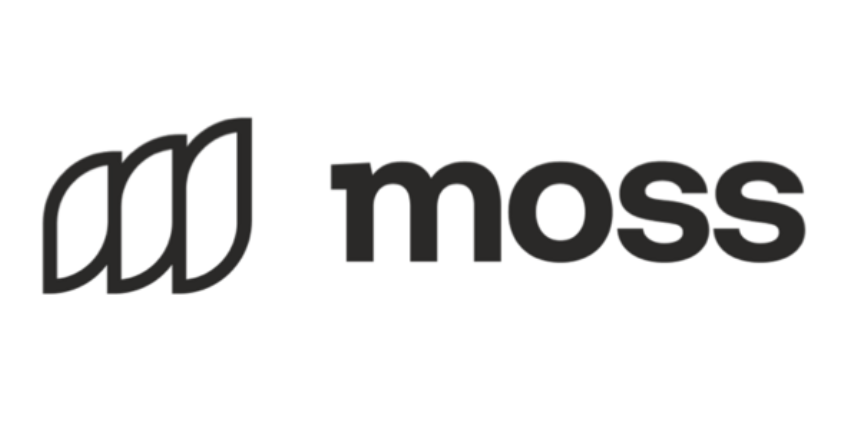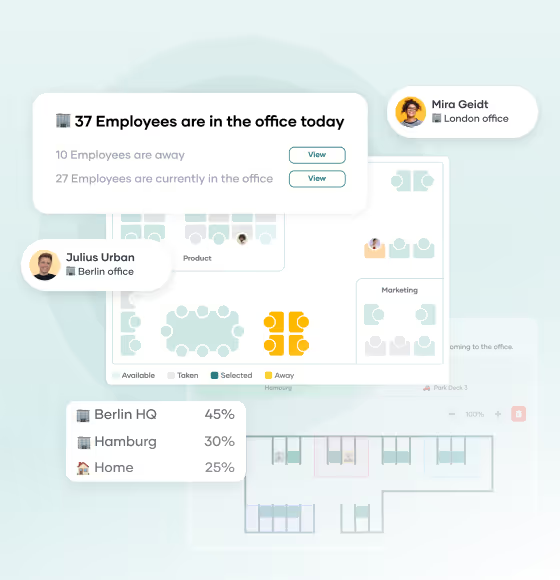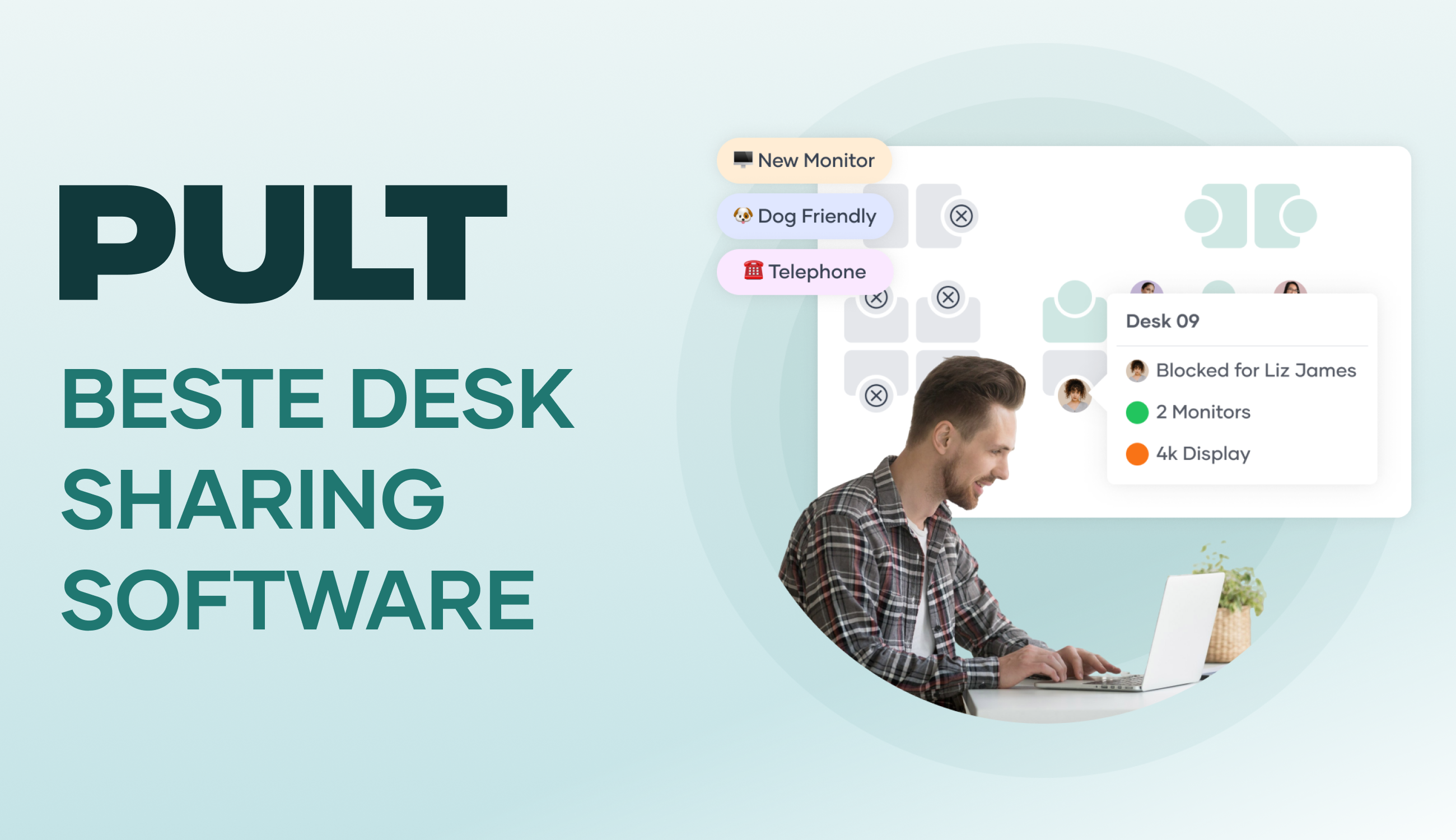Smart Office: Rooms, technology, and workstations for the office of the future

Smart Office: TL;DR
- A smart office uses sensors, controls, and booking systems to organize office space according to demand and offer it to employees.
- The most important room concepts in the smart office include quiet zones, areas for teamwork, meeting rooms, telephone booths, and break and social areas.
- Desk sharing in the smart office enables a fair distribution of workspaces while reducing the number of unused desks.
- The smart office offers companies higher productivity, lower space costs, and greater attractiveness in the competition for skilled workers.
- Employees in the smart office benefit from better working conditions, more choices, and fair access rules for workspaces and rooms.
What is a smart office?
A smart office is an office that is designed with technical equipment and a well-thought-out room layout to suit the actual working methods of its users. The aim is to make targeted use of technology and software to create a place that has a positive effect on productivity, health, and collaboration in equal measure.
Distinction from related terms:
- New Work focuses on values, meaning, and new forms of leadership.
- Modern Workplace often refers to the digital workplace with software and cloud services.
What are the key technologies in the smart office?
The most important technologies in the smart office include sensors for occupancy and room quality, automatic controls for lighting and climate, booking systems for workstations, rooms, and employee attendance.
Sensors for rooms and workstations
Occupancy sensors detect whether desks or meeting rooms are in use.
- Benefit: Companies can identify which areas are being used to capacity and which remain unused.
- Implementation: Workspaces that are consistently underutilized can be converted into quiet zones or areas for teamwork.
Environmental sensors measure temperature, humidity, CO₂ levels, and noise levels.
- Benefit: They provide alerts when air quality declines or noise levels become too high.
- Implementation: Poor acoustics can be improved with sound-absorbing furniture, acoustically effective partitions, or large plants.
Control of lighting, climate, and air
Automatic systems in the smart office regulate lighting, heating, and ventilation depending on usage.
- Example: Lighting dims when there is sufficient daylight, ventilation starts when CO₂ levels rise, and heating and cooling are reduced in unused rooms.
- Result: consistent conditions for concentrated work in rooms that are actually in use and lower overall energy consumption.
Booking systems for workstations, rooms, and zones
Employees can reserve individual workstations, meeting rooms, project areas, quiet zones, or parking spaces in advance.
- Advantage: everyone has the opportunity to access the available options fairly.
- Implementation: Reservation via app or desktop, quick check-in with QR code or chip, automatic release of unused spaces.
Tip: Your employees can reserve their preferred seats in advance using the PULT desk booking and room booking system. As soon as they arrive and connect their laptop or smartphone to the company Wi-Fi, their presence is automatically recorded.
Discover PULT
What room concepts belong in a smart office?
Important room concepts in a smart office design include quiet zones for quiet and concentrated work, open areas for teamwork, meeting rooms and telephone booths, as well as break and social areas. They complement each other and enable every activity to find the right place.
Quiet zones and individual workstations for concentrated work
- Purpose: undisturbed work on tasks that require full attention.
- Implementation: sound-absorbing materials such as carpets, acoustic ceilings, room dividers, upholstered furniture; rules for quiet (no phone calls or extended conversations).
- Addition: plants as natural sound absorbers and visual barriers.
Areas for teamwork
- Purpose: Employee exchanges, project work, workshops, meetings with customers.
- Implementation: Open spaces with rollable tables, chairs, whiteboards, room dividers, presentation technology.
- Location: Physically distant from quiet zones.
Meeting rooms and telephone booths
- Purpose: Confidential conversations, video calls, concentrated small group work.
- Implementation: Soundproof telephone booths with power supply for laptops and adjustable lighting; small meeting rooms equipped with displays, cameras, and good acoustics.
- Advantage: Enables undisturbed communication despite large, open office spaces.
Break and social areas
- Purpose: Relaxation, informal exchange, community.
- Implementation: Coffee kitchens, lounges with sofas, games or sports facilities.
- Addition: Design with warm materials, fabric-covered surfaces, and upholstered furniture, as well as daylight to create a pleasant atmosphere.
Biophilic design
- Purpose: Combining work and nature, increasing well-being and concentration.
- Implementation: Plant walls, planted room dividers, wood materials, plenty of daylight.
- Advantage: Natural sound absorption and improved air quality.
What are the advantages of smart office solutions for companies?
A smart office system offers companies three main advantages: productivity increases because employees are happier overall, space is used more efficiently, and the company becomes more attractive to applicants and employees.
Increase productivity in the smart office
- Fewer disruptions thanks to appropriate room layout and better acoustics.
- Fewer health-related absences because lighting, air quality, and equipment are better coordinated.
- More collaboration thanks to zones for exchange and project work.
Optimize space and costs
- Workstations are only provided when they are really needed.
- Vacancies decrease and operating costs are significantly reduced.
- Energy consumption is reduced through demand-based control of lighting, heating, and ventilation.
Increase attractiveness as an employer
- A modern and employee-centered smart office signals appreciation and awareness of employee wishes.
- Talented individuals are more likely to choose employers who offer contemporary spaces and working opportunities.
- Sustainability aspects (energy savings, conscious use of space) improve the company's image.
What are the advantages of a smart office for employees?
For employees, smart office services mean better everyday working conditions, more choices, and fairer use of office resources.
- Pleasant working conditions with fresh air, appropriate lighting, and quiet zones.
- Variety between sitting, standing, and movement.
- Less acoustic stress.
- Employees decide for themselves whether they want to work alone in a focused manner or together as a team.
- Quiet zones, project areas, or social areas are available depending on the task.
- Desk sharing allows employees to choose the workplace that suits their activity.
- Booking systems ensure that all employees have equal access to workstations, rooms, and break areas.
What role does desk sharing play in the smart office?
A smart office combines sensor technology, controls for lighting, heating, and ventilation, and a room layout that meets the actual needs of employees. However, for these new smart office structures to be effective and fairly distributed, an overarching concept is needed: desk sharing.
Desk sharing allocates workspaces according to demand, makes underused areas visible and usable, and ensures that employees get the right space for the task at hand. To make the concept work, you can use booking software:
- Set up the PULT booking system: Reserve individual workstations, meeting rooms, project areas, quiet zones, and parking spaces via app or desktop; automatic check-in via Wi-Fi connection with PULT Presence; automatic release in case of no-shows (no-show rule).
- Establish fair rules: maximum advance booking period, no permanent reservations for the same table, quotas for high-demand areas and team days when adjacent seats can be booked.
- Standardize equipment: monitor, docking station, keyboard, mouse at every table; personal items in lockers; clean desk policy.
- Organize cleaning and maintenance: Daily cleaning of individual workstations by employees, provision of disinfectant wipes, regular maintenance cleaning.
{{onpage-cta}}
How do you start implementing a smart office?
The first step is to take stock: Which areas are being used, where are there vacancies, which rooms are missing? This is followed by the introduction of a booking system. After a few weeks, usage should be evaluated and adjusted.
What investments are necessary for a smart office?
The costs depend on the starting point. Sensors for occupancy and CO₂, software for workplace booking, and small modifications such as acoustic partitions are inexpensive to implement. Larger expenses arise with new room layouts or technical building automation.
What role does data protection play in the smart office?
A smart office works with usage data. It is important that individual employees are not monitored for performance. Data should be collected anonymously or aggregated. In PULT, you work in compliance with data protection regulations, as no conclusions about individual employees can be drawn from the data.
How can the success of a smart office be measured?
Success criteria include workplace utilization rates, employee satisfaction, and energy cost savings achieved through smart heating, ventilation, and lighting systems. Regular surveys supplement the key figures from the booking systems.
How future-proof is a smart office?
A smart office is expandable: new sensors, additional software functions, or room concepts can be integrated step by step. This makes it more adaptable than traditional, rigid office concepts.
A new hybrid workplace experience is coming. Start Now. 🎉
Offer your employees a workplace where they feel comfortable. Start your smart office automation now with PULT.





















.avif)




